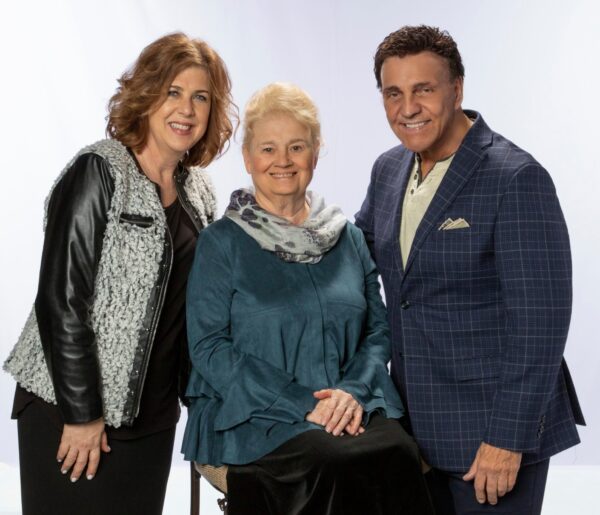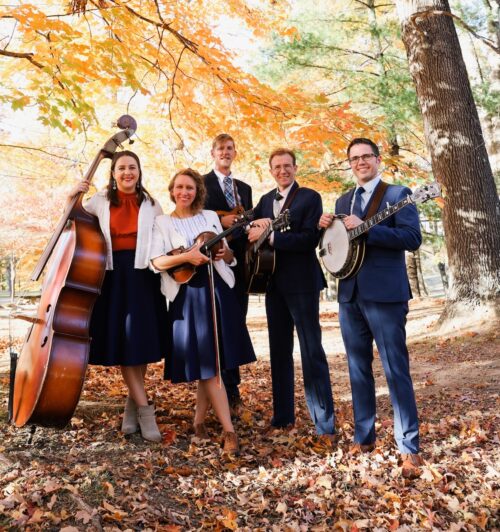
Some of the better-known quartets spent a number of years as the resident church group. Besides providing songs for the congregation, members of the groups also served as part of the church staff. Although there were a number of groups that started as church quartets, the Weatherfords, Cathedrals, Landmarks, Monitors and Toneys were among those who moved on to become well-known names on the Gospel circuit.

In the early 1950’s, the Weatherford Quartet were the resident group for WOWO radio in Ft. Wayne, Indiana. They also sang in churches and became acquainted with Rex Humbard who was preaching at Calvary Temple, in an old theater in Akron, Ohio. In 1953, WOWO decided to not use live music and as a result the Weatherfords had no radio contract. The Weatherfords joined Rex Humbard as the resident group for the Cathedral of Tomorrow, a new state-of-the-art facility.

One of the Weatherfords better-known alignments during this time consisted of Armond Morales, Earl Weatherford, Glen Payne, Bobby Clark and Danny Koker. The group also did some touring but Rex Humbard wanted a group that was active in the church. In 1963, three members of the Weatherfords: Danny Koker, Glen Payne and Bobby Clark, decided to stay and became the Cathedral Trio.
The Cathedral Trio performed at the Cathedral of Tomorrow and traveled with Rex Humbard. In 1964, they added George Younce and became a quartet. They continued as part of the Cathedral of Tomorrow staff until 1969. Although they were no longer a part of the Cathedral of Tomorrow, they kept the name Cathedral Quartet and maintained their home in Stow, Ohio. From this beginning, they ultimately became one of the best-known Southern Gospel groups.
The Landmark Baptist Church in Cincinnati, Ohio was (and is) a church that utilizes many of the touring Southern Gospel groups. The pastor, Rev. John Rawlings, loved quartet music and so did his son, Carroll. The Landmark Quartet was formed as the church’s home group. Although members changed through the years, one of the better-known lineups consisted of Buddy Liles, Don Norman, Mack Evans, Lorne Matthews and Carroll Rawlings. This group also did some touring and recorded some quality albums.
​The Monitors Quartet was organized in Indianapolis, Indiana in 1957 by Horace Floyd, former member of the Swanee River Boys. He added Bill Nelson as lead, Ned Williman as baritone, Warren Holmes on bass and Din Ritter as pianist. The Monitors were affiliated with the Cadle Tabernacle, a large Christian church in Indianapolis, which seated over 10,000 people. The church also broadcast on WLW radio in Cincinnati and was heard in a multi-state area. The Monitors performed on radio seven days per week. The Monitors continued for several years before disbanding. The group was reformed as a part-time group around 1980 and consisted of Lem Kinslow, Bill Nelson, Hal Morrison, Ray Burdett (former Statesmen bass) and Jeff Stice.
 Alden Toney sang tenor with the Blackwood Brothers from 1949 through 1951 and then took a job in the automotive industry in Detroit, Michigan. Alden’s brothers, Bob and Kyer were discharged from the Army in 1954. In 1955, brother Jim joined the others to form the Toney Brothers Quartet. Like other quartets that came after them, they became affiliated with a church, Gilead Baptist Church in suburban Allen Park. They began appearing on CKLW-TV in Windsor, Ontario, Canada as well. This group appeared on the first National Quartet Convention in 1957. When Alden retired in the early 1960s, he was replaced by Ron Booth Sr., father of Michael and Ronnie of the Booth Brothers.
Alden Toney sang tenor with the Blackwood Brothers from 1949 through 1951 and then took a job in the automotive industry in Detroit, Michigan. Alden’s brothers, Bob and Kyer were discharged from the Army in 1954. In 1955, brother Jim joined the others to form the Toney Brothers Quartet. Like other quartets that came after them, they became affiliated with a church, Gilead Baptist Church in suburban Allen Park. They began appearing on CKLW-TV in Windsor, Ontario, Canada as well. This group appeared on the first National Quartet Convention in 1957. When Alden retired in the early 1960s, he was replaced by Ron Booth Sr., father of Michael and Ronnie of the Booth Brothers.
The foundation of being associated with a church was manifested in the ministry and presentation in each of the aforementioned groups.
by Dean Adkins
First published by SGN Scoops in February 2015
For more great Gospel music columns and artist features, read the latest SGN Scoops digital magazine, located in the SGN Scoops mainpage.



